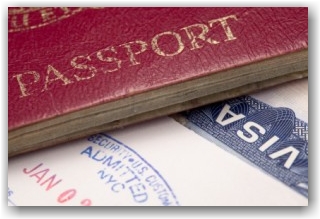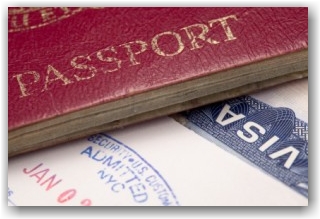Posts Tagged ‘DOL’
Thursday, October 31st, 2013

Infosys is India’s second largest software exporter, and has about 30,000 workers in the U.S. (160,000 worldwide) with $6B in sales.
After years of investigation, it was found that Infosys “knowingly and unlawfully” brought Indian workers into the United States on B-1 business visitor visas( since 2008), to circumvent the higher costs and delays of a longer-term employment-related visa, such as the H-1B visa that the workers should have had. It was found that Infosys systematically submitted misleading information to US immigration authorities and consular officials to obtain the B-1 visas that do not permit employment, unfairly gaining a competitive edge and undercutting American workers qualified for the jobs
Press release states: “Infosys failed to maintain I-9 records for many of its foreign nationals in the United States in 2010 and 2011 as required by law, including a widespread failure to update and re-verify the employment authorization status of a large percentage of its foreign national employees…more than 80 percent of Infosys’s I-9 forms for 2010 and 2011 contained substantive violations.”
The largest fine of its kind, was paid out as follows: $5 million to Homeland Security Investigations, $5 million to the Department of State, and $24 million to the DOJ.
How can employers protect themselves?
The five federal agencies charged with workplace enforcement are not only going after businesses that are known to employ undocumented workers, but they are also making examples out of industry leaders across the country creating headline news. It goes without saying, that this is now a topic that should be on HR executives’ action list. Turning a blind eye can be exceedingly costly and cause great damage to a company’s reputation.
For more on this Story: CBS Reports NY Times
For more on our services and solutions
Tags: B-1 Visa, Business Immigration, DOL, H-1B Visa, HSI, I-9 Violations, I-9/E-Verify News, ICE Audit, ICE Investigation, ICE NOI, Indian IT Industry, Infosys, Legal Workforce, Skilled Professionals, Specialty Workers, SSA, US Consulates, USCIS, Visa Fraud
Posted in Department Of Homeland Security (DHS), Department Of Labor (DOL), Department of State, Employer Compliance, H-1B Visas, I-9/E-Verify News, ICE, Immigration News, Social Security, USCIS | Comments Off on Infosys to pay $34M in Fines for Visa Fraud and I-9 Violations
Thursday, October 17th, 2013
E-Verify has resumed operations following the federal government shutdown. All E-Verify features and services are now available.
The following information addresses questions on how the federal government’s shutdown affected E-Verify and Form I-9.
Information For Employers
Form I-9
The Form I-9 requirements were not affected during the federal government shutdown. All employers must complete and retain a Form I-9 for every person hired to work for pay in the United States during the shutdown.
E-Verify
Employees who received a Tentative Nonconfirmation (TNC)
If an employee had a TNC referred between September 17, 2013 and September 30, 2013 and was not able to resolve the TNC due to the federal government shutdown, add 12 federal business days to the date printed on the ‘Referral Letter’ or ‘Referral Date Confirmation.’ Employees have until this new date to contact the Social Security Administration (SSA) or the Department of Homeland Security (DHS) to resolve their cases. If you have an employee who decided to contest his or her TNC while E-Verify was unavailable, you should now initiate the referral process in E-Verify. Employers may not take any adverse action against an employee because of a TNC.
Employees who received a SSA Final Nonconfirmation (FNC) or DHS No Show result
If an employee received a Final Nonconfirmation (FNC) or No Show because of the federal government shutdown, please close the case and select “The employee continues to work for the employer after receiving a Final Nonconfirmation result,” or “The employee continues to work for the employer after receiving a No Show result.” The employer must then enter a new case in E-Verify for that employee. These steps are necessary to ensure the employee is afforded the opportunity to timely contest and resolve the Tentative Nonconfirmation (TNC) that led to the FNC result.
Creating Cases: Three-Day Rule
You must create an E-Verify case for each employee hired during or otherwise affected by the shutdown by November 5, 2013. If you are prompted to provide a reason why the case is late (i.e., does not conform to the three-day rule), select ‘Other’ from the drop-down list of reasons and enter ‘federal government shutdown’ in the field. Federal Contractor
Deadlines
During the federal government shutdown, federal contractors could not enroll or use E-Verify as required by the federal contractor rule. If your organization missed a deadline because E-Verify was unavailable or if it has an upcoming deadline for complying with the federal contractor rule, please follow the instructions above and notify your contracting officer of these instructions.
Information For Employees
If the federal government shutdown prevented you from contesting a Tentative Nonconfirmation (TNC), you will be allowed additional time to contact the Social Security Administration (SSA) or Department of Homeland Security (DHS). If your TNC was referred between September 17, 2013 and September 30, 2013, and you were not able to resolve the mismatch due to the federal government shutdown, you should:
- Add 12 federal business days to the date printed on the ‘Referral Letter’ or ‘Referral Date Confirmation’ that your employer provided you after you contested the TNC. Federal business days are Monday through Friday and do not include federal holidays.
- Contact SSA or DHS by the new date to resolve your TNC.
If you received a Final Non-Confirmation (FNC) because you could not contact DHS or SSA during the federal government shutdown, or because you could not contact DHS or SSA in the first ten days after the government reopened, please contact your employer and request that the employer re-enter your query. For more information about contesting your TNC or FNC, please refer to Employee section of the E-Verify website.
Customer Support
E-Verify Customer Support expects an increase in requests for assistance. Due to this increase, customers may experience longer than normal delays and response times. We apologize for any inconvenience and appreciate your patience. For any questions or additional information about how the federal shutdown affects E-Verify, please email E-Verify@dhs.gov. For questions about Form I-9, please visit I-9 Central or email I-9Central@dhs.gov. Employers and employees may also contact E-Verify at 888-464-4218. Customer Support representatives are available Monday through Friday 8:00 am to 5:00 pm local time.
If you would like to become a client of our office or have any questions psertaining to this blog post, please give us a call.
Tags: DOL, E-Verify, E-Verify after Shutdown, Employment Eligiblity Verification, FNC, I-9, I-9/E-Verify News, Legal Workforce, OSC, SSA, TNC, USCIS
Posted in Employer Compliance, I-9/E-Verify News, ICE, Immigration News, OSC, Social Security, USCIS | Comments Off on E-Verify Now Open and Provides Instructions on Shutdown Issues for New Hires, TNCs and FNCs
Thursday, October 10th, 2013

On June 15, 2012, President Obama signed a memo calling for deferred action for certain undocumented young people who came to the U.S. as children and have pursued education or military service here. Applications under the program which is called Deferred Action for Childhood Arrivals (“DACA”) began on August 15, 2012. Individuals that meet particular criteria, are awarded employment authorization (a/k/a an “EAD Card”) by USCIS.
USCIS does not alert employers when EAD cards have been issued to existing employees, and the employee is under no obligation to present the document to the employer. However, should they do so, the employer is obligated to examine the document.
The Attached Fact Sheet identifies the employer’s obligations during the Form I-9 process and provides specific guidance to employers on the treatment of EADs issued by USCIS to DACA recipients, whether they be current employees who come forward on their own, or new hires.
Note that DACA guidance does not direct employers to perform E-Verify queries on current employees who present DACA work authorization. Rather, it states that employers should complete a new Form I-9 and perform an E-Verify query in certain situations involving material changes to identity information. More on this topic can be found in the new M-274 Handbook on pages 23-24.
Should you like to become a client of our office or have particular questions pertaining to this topic, please feel free to contact us.
Tags: DACA, DACA EAD Cards, DACA Fact Sheet, DOL, E-Verify, EAD Employment Authorization, I-9 AUDIT, I-9 Form, I-9 Reverification, I-9 Training, I-9/E-Verify News, ICE, Immigration News, Legal Workforce, M-274, OSC, SSA, USCIS
Posted in DACA | DAPA, Department Of Homeland Security (DHS), Department Of Labor (DOL), Employer Compliance, I-9/E-Verify News, ICE, Immigration News, OSC, Social Security | Comments Off on Form I-9 Processing for DACA Recipients
Friday, September 13th, 2013

This gives you a good look at what the OSC is targeting these days.
We’d also like to take the opportunity to remind you to schedule I-9 audits yearly (they don’t have to be full audits – but can be partial) so that you can see what’s buried in your paperwork and catch it before the issues become reoccurring problems AND before ICE knocks on your door. Training: Well, we can’t say enough on training. Employers need to provide ongoing ‘refresher’ training every year. The issues change from year to year as do the interpretations. Lastly, review your policies and procedures in relation to compliance best practices for your business. Make sure they are up to date, and make sure that every employee who is involved with processing I-9 forms participates in yearly training, reads the M-274 Employer Handbook and remembers to provide to every employee a List of Acceptable Documents along with the I-9 form Instructions when they fill out the form. So many errors can be caught at the onset just by reviewing the instructions and the List of Acceptable Documents.
Lastly, our Employer Resource Center is an excellent resource, as is our Blog and our LinkedIn Group, I-9/E-Verify: Smart Solutions for Employers. Sign up and keep yourself informed
Tags: Department Of Homeland Security (DHS), DOL, Employer Compliance News, I-9 Compliance, I-9 Employer Resources, I-9 Policies, I-9 Training, I-9 Violations, I-9/E-Verify News, ICE, Legal Workforce, OSC, SSA
Posted in Uncategorized | Comments Off on A Sampling of OSC Recent I-9 Enforcement Activities
Friday, April 5th, 2013

U.S. Citizenship and Immigration Services (USCIS) announced today that it has received a sufficient number of H-1B petitions to reach the statutory cap for fiscal year (FY) 2014. USCIS has also received more than 20,000 H-1B petitions filed on behalf of persons exempt from the cap under the advanced degree exemption. After today, USCIS will not accept H-1B petitions subject to the FY 2014 cap or the advanced degree exemption.
USCIS will use a computer-generated random selection process (commonly known as the “lottery”) for all FY 2014 cap-subject petitions received through April 5, 2013. The agency will conduct the selection process for advanced degree exemption petitions first. All advanced degree petitions not selected will be part of the random selection process for the 65,000 limit. Due to the high number of petitions received, USCIS is not yet able to announce the exact day of the random selection process. Also, USCIS is currently not providing the total number of petitions received, as we continue to accept filings today. USCIS will continue to accept and process petitions that are otherwise exempt from the cap.
USCIS will provide more detailed information about the H-1B cap next week.
We are disheartened to see that USCIS is not basing their count on a first come first serve basis. If the cap is open and your case is received before the cap is exhausted, you should be guaranteed that your case has been accepted for processing. We are not in favor of the computer-generated random selection lottery approach that USCIS has taken this filing season, where all cases received through April 5th will be put into a lottery. This creates tremendous uncertainty for employers who planned in advance…Just another sign that we are seriously in need of H-1B reform and a process that permits business and the economy to regulate the process.
We will keep you posted as more information is released.
Tags: Comprehensive Immigration Reform, DOL, H-1B Cap, H-1B Lottery, H-1B Quota, Immigration Reform, Skilled Worker Visa, Skilled Workers, USCIS
Posted in Uncategorized | Comments Off on H-1B Visa 2014 Quota Reached in 5 Days
Tuesday, January 15th, 2013

There have been reports for some months now that the USCIS California Service Center has enforced new interpretation concerning the way it views H-1B requirements for job location changes, when duties and all other employment terms remain the same.
Previously, according to a 2003 legacy INS memo, a simple change in job location did not require that a new petition be filed with USCIS. The employer was required to analyze prevailing wage for the new location, file and obtain a new certified Labor Condition Application (LCA) with the Department of Labor prior to the employee moving to the new location, post the LCA at the new work site according to DOL regulations, make sure wage and hour obligations were met, but did not have to file an amended petition with USCIS.
Under the CSC’s new and controversial interpretation, changes in job location alone do require amended petitions. In fact, employers are reporting site audits and revocation of H-1B petitions when USCIS inspectors could not find the H-1B worker at the work site listed in the petition. At this point, no other USCIS service center has followed this radical reinterpretation of the law – just the CSC.
Long-standing guidance still indicates that no amended petition should be required when only job location changes. However, to avoid adverse consequences – at least, until the CSC revisits its controversial new interpretation – employers should proceed with caution and work with a competent immigration professional whenever an H-1B worker’s job location changes, in order to determine whether any amended filings are required. Employers need to be careful to reveal all possible jobsite locations for each H-1B worker at the front end of case processing.
USCIS headquarters has the H-1B amendment issue under consideration and has indicated that they may issue additional guidance regarding this matter. In the meantime, please be advised that for cases under the jurisdiction of the CA Service Center for H-1B workers whose jobsite locations have changed, an amended petition prior to any geographic relocation is now required.
Should you wish to become a client of our office, please contact one of our immigration professionals at info@immigrationcompliancegroup.com, or call 562 612.3996.
Tags: California Service Center, CSC, DOL, Employer Site Visits, Employment Visas, H-1B Amended Petition, H-1B Consultants, H-1B Jobsite Relocation, H-1B Posting Notice, H-1B Staffing Agencies, H-1B Visa, Immigraiton News, Labor Condition Application, LCA, Nonimmigrant Visas, Specialty Occupations, Specialty Workers, USCIS
Posted in Department Of Labor (DOL), Employer Site Visits, H-1B Visas, Immigration Legislation, Immigration News, Staffing Agencies, USCIS | Comments Off on H-1B Visa: California Service Center Enforces Radical Interpretation of H-1B Requirements for Job Location Changes
Monday, February 27th, 2012
 With H-1B filing season upon us as of April 2, 2012, we take this opportunity to remind you that although there has been slow but steady economic recovery over the last few years, the H-1B cap is expected to be reached much faster this year. This, coupled with a recent NFAP Policy Report Analysis released this month citing case denial rates of 17% with a staggering RFE (Request for Evidence) rate of 36%, sends a clear, “culture of no” message that USCIS is making it more difficult for skilled foreign nationals to work in the USA with increasing denial rates for both the H-1B and L-1 visa programs. All the more reason to be relying on experienced business immigration council for your case filings.
With H-1B filing season upon us as of April 2, 2012, we take this opportunity to remind you that although there has been slow but steady economic recovery over the last few years, the H-1B cap is expected to be reached much faster this year. This, coupled with a recent NFAP Policy Report Analysis released this month citing case denial rates of 17% with a staggering RFE (Request for Evidence) rate of 36%, sends a clear, “culture of no” message that USCIS is making it more difficult for skilled foreign nationals to work in the USA with increasing denial rates for both the H-1B and L-1 visa programs. All the more reason to be relying on experienced business immigration council for your case filings.
The NFAP report states, “Employers report the time lost due to the increase in denials and Requests for Evidence are costing them millions of dollars in project delays and contract penalties, while aiding competitors that operate exclusively outside the United States beyond the reach of USCIS adjudicators and U.S. consular officers.”
Small to medium-size companies and IT consultants and staffing agencies often bear the burden of these overbearing RFE’s. Working with smart immigration practitioners and preparing your case strategy in advance to address both your strengths and weaknesses, will pay off greatly. Here are some tips that we highly recommend be incorporated in your filings:
1) Incorporate a detailed brochure and description of the employer’s products or services and why you require a professional with a bachelor’s degree to perform the offered position. Include promotional materials, press releases or news articles to illustrate the nature of the business, new trends and growth factors in your business that substantiate the offered position.
2) Include a copy of your corporate tax return or financial statements to evidence profit and business stablity
3) Explain in detail why the position cannot be performed by an employee without a bachelor’s degree; i.e. is it standard in your industry? Provide detail (such as examples of work to be done) concerning the complexity of the position
4) Provide a real, detailed job description with the percentage of time spent on the duties of the position, the qualifications and special skills required to perform the job. Further explain any discretionary judgment that the employee will have in their job and other such areas of responsibility that are demanding or highly advanced
5) Provide evidence that you have a current and past practice of hiring bachelor’s degree employees for the subject position
6) IT and staffing agencies must be prepared to evidence the “employer-employee relationship” in H-1B offsite placement work situations by clearly evidencing the employer’s ability to “hire, pay, fire, supervise, or otherwise control the work of the employee. (based upon the January 8, 2010 Neufeld Memorandum).
If you’d like to set up a time to discuss your case with our office or to engage our services, please feel free to contact us.
Tags: DOL, F-1 Students, Global Mobility, H-1B, H-1B Job Descriptions, H-1B Visas, IT Consultants, L-1 visas, NFAP Policy Report, Specialty Workers, Staffing Agencies, USCIS
Posted in Department Of Homeland Security (DHS), Department Of Labor (DOL), H-1B Visas, L-1 Visa, Staffing Agencies, USCIS | Comments Off on Tips for H-1B Visa Petition Approvals
Thursday, October 20th, 2011
This issue is currently under examination within the H-1B policy review working group as part of the comprehensive USCIS policy review. It has long been fraught with confusing and sometimes contradictory policy guidance regarding when a change in employee work location requires a new H-1B petition.
The fact is that not every change in jobsite location represents a ‘material change’ and not every change equates to a change in the conditions of employment, particularly if the change is in the same Metropolitan Statistical Area (MSA) upon which the Labor Condition Application and the prevailing wage is based.
It has long been the policy articulated in the October 23, 2003 Efren Hernandez letter (AILA Doc. No. 03112118), that changes in job site location do not require amended H-1B filings as long as a Certified Labor Condition Application is in place; an LCA posting notice under DOL regulations was completed, and other wage and hour obligations are met.
The American Immigration Lawyers Association (AILA) is requesting that USCIS “issue clear and unequivocal guidance confirming the provisions in the Hernandez letter so that petitioners and USCIS can follow and rely upon it.”
We will keep you informed concerning this matter as developments occur.
Tags: Business Visas, DOL, H-1B change in jobsite, H-1B Compliance, H-1B Visa, USCIS
Posted in Department Of Labor (DOL), H-1B Visas, USCIS | Comments Off on H-1Bs and Change in Jobsite Locations
Wednesday, August 10th, 2011
The Department of Labor announced last week that it will be suspending the processing of prevailing wage determinations (PWDs) for most case types, including PERM labor certifications and H-1B cases – while it complies with a federal court order that requires them to reissue some 4,000 PWDs for the H-2B temporary non-agricultural visa program. The suspension will mean that some employers may be delayed in their ability to commence recruitment on or file PERM labor certification applications. DOL has not indicated when it will resume issuing non-H-2B PWDs, but because its H-2B workload is considerable, it may not return to full-scale PWD processing for several months.
Though the suspension involves several immigration case types, PERM applications, by far, are the most severely affected due to the time-sensitivity given that the results of an employer’s labor certification recruitment are valid for just 180 days. If a request for a prevailing wage determination is delayed and an employer has commenced the recruitment phase prior to receiving the PWD, an employer’s recruitment could expire, meaning that the entire recruitment process would have to be redone before a PERM application could be filed. The effect on H-1B petitions is far less because employers can use the OFLC Wage Data Center or other independent surveys to determine the prevailing wage for an H-1B position.
DOL’s official timeframe for processing prevailing wage requests had been 60 days, but they had been turning them around in about 30 days. It appears that the suspension is affecting PWRs filed as early as the beginning of June 2011.
Action Item for Employers: If you require a PERM Labor Certification Application be filed in order to continue employment for your H-1B visa holders who are approaching the 6-year maximum period of stay, you cannot start these cases early enough. Please discuss strategy and planning with your immigration professional right away, or give our office a call to discuss your case concerns. We will keep you updated as developments occur.
Tags: DOL, H-1B, Labor Certififcation, PERM, Prevailing Wage Determinations, Prevaing Wage Requests, PWD, PWR
Posted in Department Of Labor (DOL), H-1B Visas, Immigrant Visas (I-140 Petitions), USCIS | Comments Off on DOL Suspends Prevailing Wage Processing for PERM Labor Certification Cases
Wednesday, March 2nd, 2011
USCIS announced today that it has published a proposed rule that will save US businesses more than $23 million over the next 10 years by establishing an advance H-1B registration process for U.S. employers seeking to file petitions for foreign workers under the H-1B specialty occupation category. The proposed electronic system would minimize administrative burdens and expenses related to the H-1B petition process—including reducing the need for employers to submit petitions for which visas would not be available under the visa cap.
USCIS Director Alejandro Mayorkas announced today the opening of a 60-day comment period that will allow businesses and the general public to provide input on the proposed system in order to ensure it best meets the needs of employers that rely on H-1B visas to bring in foreign workers for specialty occupations. Mayorkas expressed that “Improving the H-1B petition process is part of USCIS’s ongoing efforts to leverage new ideas and innovation to streamline our operations and enhance customer service.”
The employer would go through an online, electronic a process that would take an estimated 30 minutes to complete. Before the petition filing period begins, USCIS would select the number of registrations predicted to exhaust all available visas. Employers would then file petitions only for the selected registrations. The registration system would save employers the effort and expense of filing H-1B petitions, as well as Labor Condition Applications, for workers who would be unable to obtain visas under the statutory cap.
The proposed rule, which posted to the Federal Register today for public viewing, contains complete details about the registration system and estimated cost savings. USCIS encourages formal comments on the proposed rule. We link to the following additional information:
Fact Sheet
News Release
Tags: DOL, Employer Registration, H-1B, H-1B Cap, H-1B Visa, Specialty Occupations, USCIS
Posted in Department Of Labor (DOL), H-1B Visas, USCIS | Comments Off on H-1B Electronic Registration for Employers is Coming for Cap-Subject Cases





